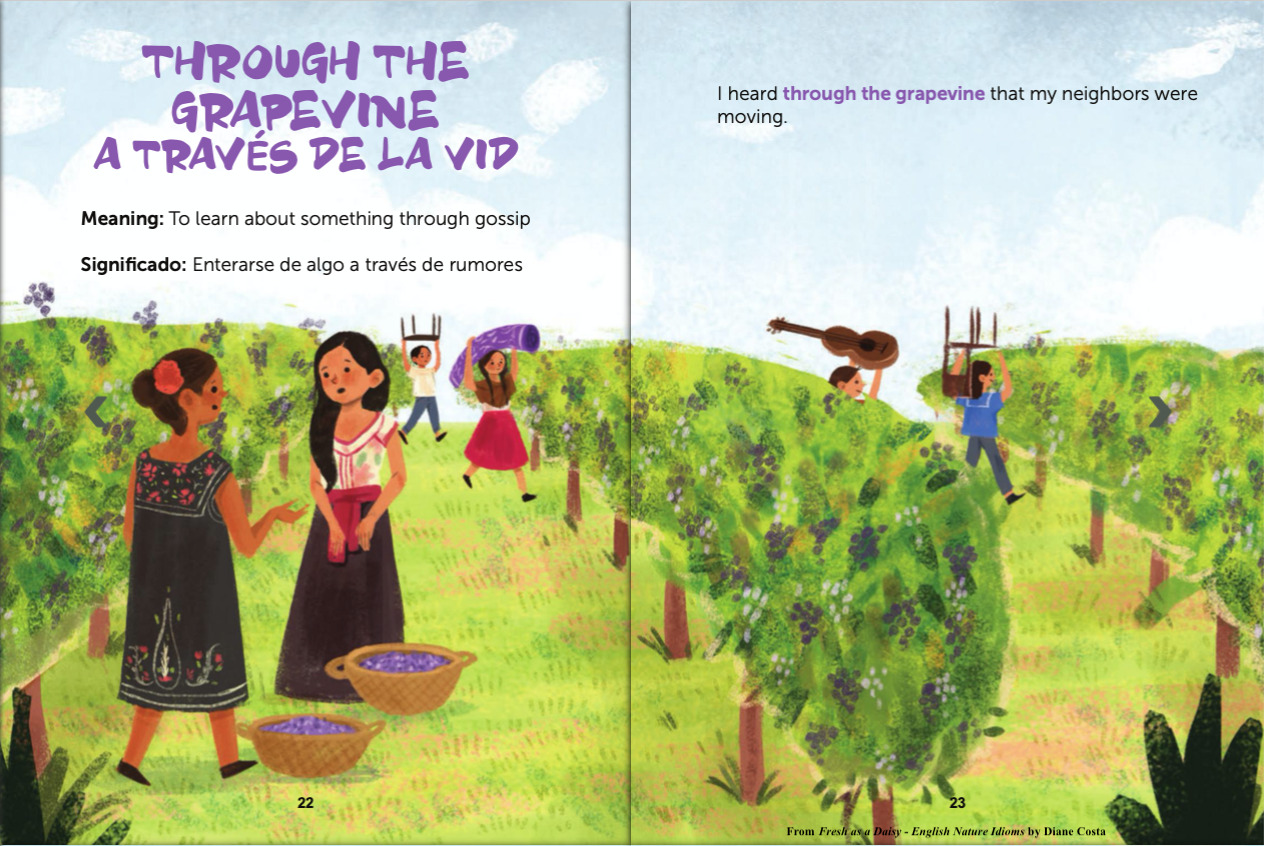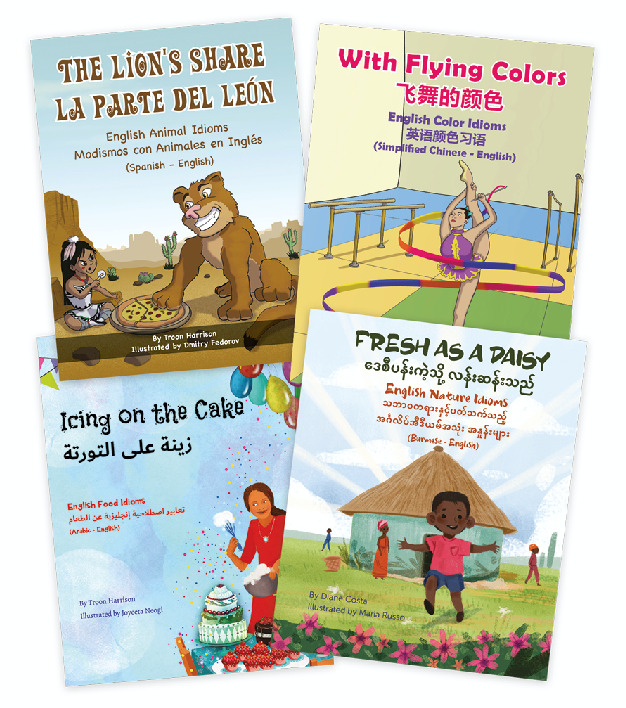Idiom Week takes place this year from January 9-15. Language Lizard has put together the best ways to teach idioms with multicultural resources. Use hashtag #IdiomsRock on social media and tell us about your favorite idioms from any language!
The Role of Idioms in Speech
Think about a time when you heard a story or some new gossip. Your father’s friend’s sister-in-law told your friend’s cousin about who moved into the house down the street. Somehow, you heard about the news and now you want to tell your mother what happened. She asks you, “How did you find out about that?” Instead of going through all the details, you are able to use a short phrase that allows you to quickly get to the point. You can say, “I heard it through the grapevine.”
This efficiency is one of the main functions of an idiom in speech. It allows people to quickly and creatively express themselves. An idiom is also a phrase that says one thing but can mean something different. Check out our previous post to learn about idioms in-depth.
Every culture has thousands (maybe even tens of thousands) of idioms, so a lot of casual conversation can occur through the use of idioms. However, effective communication can be more difficult without knowledge of local idioms. This is true for students learning a second language, as well as adult English learners, and students with special needs.
Teaching Idioms with Multicultural Resources
Use a Theme: Once you select a theme for your lesson, ask students to report back with their favorite idiom to share with the class. For example, if the theme is Animal Idioms, students might share “get my ducks in a row,” or “at a snail’s pace.” Other great themes for Idiom Week are food, colors, and nature.
Guessing Game: Present an idiom and ask students to guess its meaning. Younger kids may need to start with common idioms they’re familiar with, like “over the moon” or “caught red-handed.” For older students, find more challenging outdated idioms online. For example, an idiom like “happy cabbage” is sure to generate lots of discussion. To garner more participation, have students draw out their favorite idioms, or act them out in a game of charades.
Multicultural Exploration: Share with your students how idioms exist in every culture around the world. Then, discuss the ways they are similar or different from English idioms. After finding idioms in other languages online, have students break them down by translating the words directly, and look at how their meanings are not immediately obvious that way. Then, ask students to discuss what each idiom’s true meaning might be. Lastly, what might each idiom tell us about various cultures? Can we learn something about each culture’s history, or about what’s important in the daily lives of those people?
Bonus Activity: Another fun activity is to compare similar idioms that occur in different languages. How are they different, and what might be behind those slight differences?
Free Multicultural Lesson Plans and Activities
Language Lizard Idiom Books are a great resource for teachers in virtual, in-person, or blended classrooms, as well as homeschooling families. Idiom Books come with a variety of FREE activities to share with students and families.
The free lesson plans that come with the Idiom Books explore idioms in a multicultural context, and include activities students can do with their families, even those that speak a language other than English at home.
Many of the activities included allow students to practice idioms while learning about other cultures. Just a few examples:
- Hindu Holi Festival: fill-in-the-blank short story using color idioms
- Guess the National Animal Activity
- Multicultural Street Foods Activity
Language Lizard Idioms Books also come with links to learn in-depth background information and history about all the idioms featured in the books. Many of the illustrations show characters and settings from around the world, providing opportunities to teach children about other cultures and communities.
How do you teach your students about idioms? Share your lesson ideas below or tell us about your #IdiomsRock on social media.



